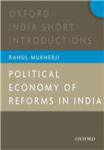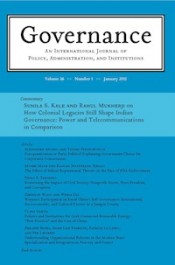India’s Congress Party has Given Modi An Historic Opportunity
 By Rahul Mukherji, National University of Singapore. The ruling Congress Party received the thrashing of a lifetime when Indians went to the polls earlier this month. The Hindu nationalist Bharatiya Janata Party (BJP) scored its first resounding majority by winning 282 seats (out of 543) in the Indian Parliament on May 16. Incoming Prime Minister Narendra Modi must now manage three challenges: restoring high rates of growth, improving the efficiency of anti-poverty programs, and resisting pressure from Hindu nationalists within his own party.
By Rahul Mukherji, National University of Singapore. The ruling Congress Party received the thrashing of a lifetime when Indians went to the polls earlier this month. The Hindu nationalist Bharatiya Janata Party (BJP) scored its first resounding majority by winning 282 seats (out of 543) in the Indian Parliament on May 16. Incoming Prime Minister Narendra Modi must now manage three challenges: restoring high rates of growth, improving the efficiency of anti-poverty programs, and resisting pressure from Hindu nationalists within his own party.
The scale of the BJP’s victory is remarkable. Get election results from Election Commission of India. The 2014 Indian election is the first since 1984 when the Indian voter has given a clear majority to one party. The voter rose above caste, region and religious distinction in the most culturally diverse democracy, which is home to 840 million voters. This occurred despite the erstwhile ruling Congress Party’s record of initiating both India’s substantial tryst with economic deregulation and globalization since 1991; and more recently since 2004, the rise of noteworthy citizenship rights and welfare.
Indeed, the center-left United Progressive Alliance (UPA) led by the Congress Party had notable achievements since 2004. The economy grew at 7.5% per annum from 2003 to 2013, surpassing all the BRICS (Brazil, Russia, India, China and South Africa) barring China. The Planning Commission noted a historic decline in the proportion of Indians below the poverty line from 37% in 2004/05 to 22% in 2011/12. And, scholars associated with National Election Studies conducted by India’s reputed election monitor – Delhi based Centre for the Study of Developing Societies - had noted that the Congress victory in 2009 benefited from welfare programs such as the National Rural Employment Guarantee Scheme (NREGS).
Why did the grand old party lose so comprehensively despite these achievements? First, in the last two years, growth plummeted to a historic low in the 4.5% to 5.0% range; investment and jobs became scarce and inflation remained intolerably high above the 10% level. Second, high profile scandals such as the allocation of spectrum for mobile telephony in 2008 and, the allocation of coal mining blocks since 2006 – all raised the specter of unregulated and rampant corruption. And, the Indian media did not hesitate to pin the government down.
Third, voters seemed concerned that the government was plagued with “policy paralysis”. The Prime Minister, for example, failed to dissuade the telecom minister from allocating spectrum in a manner that carried the stench of rampant rent-seeking. He tried to strengthen regulators and reduce the discretionary powers of the executive but ministers were more beholden to the president of the Congress Party than the country’s prime minister. A prime minister without a political base seemed helpless.
Fourth, the Congress Party and the ruling United Progressive Alliance (UPA) excelled in ruining its own electoral prospects. To give just one example, the Congress Party which ruled the state of Andhra Pradesh had outperformed other states in successfully implementing NREGS. Such initiatives led to the iconization chief minister Y S Rajasekhar Reddy (YSR) as a harbinger of prosperity for all. Thereafter the Congress Party failed to deal with the aspiration of YSR’s son in the aftermath of YSR’s tragic and fatal air crash in 2009. The central government went on to divide the state into Seemandhra and Telengana largely for perceived electoral benefit. Such political machinations infuriated voters.
Finally, Congress Party’s lead campaigner - Rahul Gandhi failed singularly in comparison to BJP’s charismatic and substantially more strategic Narendra Modi. Mr. Modi addressed a record number of 447 elections rallies between September 15 2013 and May 10 2014; 153 candidates from 185 electoral constituencies he visited, won the elections. Jobs and social inclusion were emphasized in addition to growth – for which Modi’s home state of Gujarat has become quite renowned in recent years. While Mr. Modi has served as the unbeaten chief minister of prosperous Gujarat for four terms, Rahul Gandhi had few credentials beyond being the inheritor of the Nehru-Gandhi dynastic legacy.
What is the way forward for Prime Minister Narendra Modi? First and foremost, Mr. Modi needs to emphasize equally the primacy of economic growth and human well-being. The rise of the Indian welfare state beyond 2004 occurred only after a period of sustained and rapid economic growth. And, this powerful mandate can be deployed to guide redistribution with growth. Therefore, the country desperately needs to attract investment, boost productivity and growth, and curb inflation.
The government, however, should not be misled into believing that growth alone will trickle down to the poor. India’s growth has led to poverty alleviation more gradually than in most other parts of the world. Targeted government directed welfare measures introduced by the Congress Party need consolidation and be run more efficiently.
At the same time, Mr. Modi will have to deal with pressures from BJP’s ideological inspiration - the Rashtriya Swayam Sevak Sangh (RSS) which will drive it towards Hindu nationalism and foreign investment pessimism. India needs a rather more cosmopolitan nationalism consistent with many readings of universalism that are indigenous.
Finally, Mr. Modi should persist with the Congress’s strategy of not antagonizing neighbors in South Asia and China, and consolidate excellent relations with Southeast Asia, Japan and the US.
Mr. Modi’s early pronouncements and moves, especially the one before the Indian Parliament, provide good reasons to remain optimistic about India. But meeting these three challenges — promoting growth, reducing poverty, and resisting Hindu nationalist pressure — will test his formidable political skills.
 Rahul Mukherji is associate professor in the South Asian Studies Programme, National University of Singapore. He is co-author, with Sumit Ganguly, of India Since 1980 (Cambridge University Press, 2011). His latest book is Political Economy of Reforms in India, published in April by Oxford University Press.
Rahul Mukherji is associate professor in the South Asian Studies Programme, National University of Singapore. He is co-author, with Sumit Ganguly, of India Since 1980 (Cambridge University Press, 2011). His latest book is Political Economy of Reforms in India, published in April by Oxford University Press.
